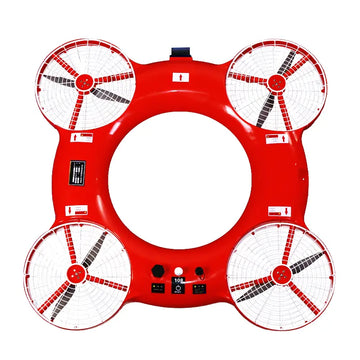When emergencies strike—be it on land, at sea, or in the air—rescue tools become the lifeline between danger and safety. From natural disasters to accidents, having the right rescue equipment can mean the difference between life and death.
But what exactly are the main types of rescue tools? In this article, we’ll break down the four essential categories of rescue tools, explore their use cases, and introduce innovative technologies like the JX-6A Air-Water Dual-Role Rescue Drone, which is revolutionizing water-based rescues.
1. Mechanical Rescue Tools
Mechanical rescue tools are perhaps the most widely recognized in fire and vehicle extrication scenarios. These include:
-
Hydraulic spreaders and cutters (commonly known as the “Jaws of Life”)
-
Rescue saws
-
Cranes and winches
They are essential in breaking through crushed vehicles, collapsed buildings, or debris. Fire departments and urban search and rescue (USAR) teams rely on these tools to reach trapped victims after car crashes, earthquakes, or structural collapses.
🧠 Fun Fact: The hydraulic "Jaws of Life" can exert up to 60,000 pounds of cutting force—enough to slice through car frames like butter.
2. Medical Rescue Tools
These tools help stabilize victims and provide critical care before or during transport. Medical rescue tools include:
-
Stretchers and spine boards
-
Automated External Defibrillators (AEDs)
-
Trauma kits and oxygen supplies
Whether it’s treating a broken limb on a mountain trail or reviving someone in cardiac arrest, medical tools ensure that rescue missions save lives and health outcomes.
3. Water Rescue Tools
Drowning remains a top cause of accidental death worldwide. Water rescue tools are vital for responding to floods, boating accidents, or swimmers in distress. These include:
-
Life rings and throw bags
-
Inflatable rescue boats
-
Jet skis and surf rescue boards
Now, drones like the JX-6A Air-Water Dual-Role Rescue Drone are making water rescues faster, safer, and smarter.
🌊 Spotlight: The JX-6A Smart Rescue Drone
Designed by Guangzhou Jiaxiao Material Technology Co., Ltd., the JX-6A is a game-changer in aquatic rescue:
-
🛩️ Dual-role design: It flies and floats, landing directly on water.
-
🌀 Wind-resistant: Operates in up to Level 6 wind conditions.
-
📸 Real-time imaging: Equipped with a tiltable gimbal camera.
-
💪 High buoyancy: Offers up to 190N, enough to support a struggling person until help arrives.
-
🚀 Lightweight and fast: Weighs less than 5kg and reaches speeds of 13m/s.
From flood zones to coastlines, the JX-6A reduces response time and lowers risks to rescue personnel. It’s like having a flying life ring with a camera, GPS, and remote control—all rolled into one.
4. High-Altitude or Vertical Rescue Tools
These tools are tailored for mountain rescues, tall buildings, or industrial environments:
-
Rope access and rappelling systems
-
Harnesses and pulleys
-
Helicopter hoists and winch systems
In urban rescue or wilderness emergencies, these systems allow trained personnel to reach inaccessible heights or depths safely.
“He who saves one life, saves the world entire.”
— Talmudic Proverb
Why a Multi-Tool Approach Matters
No single tool fits every emergency. That’s why modern rescue teams must integrate traditional equipment with cutting-edge innovations like drones and smart systems.
The JX-6A doesn’t replace lifeguards or boats—it augments them. While a lifeguard may take several minutes to reach a victim, this drone can fly directly to them in seconds, delivering flotation instantly while rescuers close in.
Final Thoughts
Rescue is a race against time. The faster and smarter the tools, the better the chances of saving lives.
To recap, the four essential types of rescue tools are:
-
Mechanical Tools – for physical extraction.
-
Medical Tools – for emergency care.
-
Water Rescue Tools – for aquatic environments.
-
High-Altitude Tools – for elevated or hard-to-reach areas.
And among them, smart innovations like the JX-6A are setting new standards in safety, speed, and precision.
👉 Ready to learn more?
Visit Didiok Makings to explore the full capabilities of the JX-6A and how it can empower your rescue mission.





